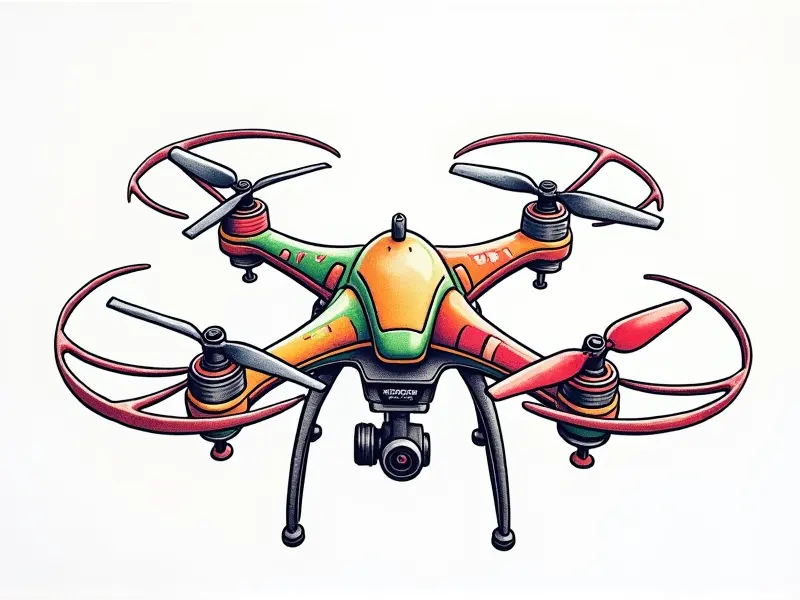Camera stabilization methods?

Ultimate Guide to Smooth Video Footage from RC Drones
Whether you're an amateur drone enthusiast or a professional videographer, capturing smooth and clear video footage is crucial for creating engaging content. This guide delves into the various methods of camera stabilization for different types of remote-controlled (RC) aircraft, including drones, quadcopters, and airplanes.
Best Camera Stabilizers for FPV Racing Drones
First-person view (FPV) racing drones require robust camera stabilizers to maintain clear visuals during high-speed maneuvers. Here are some of the top options:
- Gimbal-based Stabilization: Gimbals use motors and sensors to counteract vibrations, ensuring a stable video feed.
- Vibration Dampening Mounts: These mounts absorb shocks and reduce camera shake for smoother footage.
- Dual-Axis Stabilizers: Ideal for FPV racing drones that prioritize speed over full stabilization.
Mastering Gimbal Stability in RC Quadcopters
Gimbals are essential components for achieving stable video footage from quadcopters. Here’s how to optimize their performance:
- Select the Right Type of Gimbal: Choose between single-axis, dual-axis, or three-axis gimbals based on your needs.
- Tune Motor Settings: Adjust motor sensitivity and response time for optimal stability.
- Calibrate Regularly: Ensure the gimbal is properly balanced to avoid drift and lag.
Secrets of Maintaining Camera Stability in High-Speed Quadcopters
Maintaining camera stability at high speeds can be challenging. Here are some tips:
- Use Lightweight Cameras: Reduce overall weight to improve maneuverability and stability.
- Incorporate Shock Absorbers: Install shock absorbers between the frame and camera for added protection.
- Balanced Propellers: Ensure propellers are perfectly balanced to minimize vibrations.
Maximize Your RC Plane Camera's Clarity
RC planes often face unique challenges when it comes to camera stability. Here’s how to enhance clarity:
- Select the Right Mounting Position: Place the camera in a position that minimizes air resistance.
- Use Aerodynamic Design: Streamline your RC plane design for smoother flight and reduced vibrations.
- Incorporate Camera Brackets: Securely mount the camera to prevent accidental dislodging during high-speed flights.
Essential Tips for Stable RC Aircraft Footage
Regardless of the type of RC aircraft, here are some universal tips for achieving stable footage:
- Regular Maintenance: Keep your equipment in top condition to avoid mechanical issues.
- Test and Adjust: Experiment with different settings and configurations to find what works best.
- Leverage Technology: Utilize advanced stabilization technologies like gyroscopes and accelerometers.
Compare Leading RC Airplane Camera Stabilizers
Several stabilizer options are available for RC airplanes. Here’s a comparison of the top choices:
- Vibration Dampening Mounts: Effective at reducing minor vibrations but may not handle extreme turbulence.
- Gimbals with Built-in Motors: Provide excellent stability but can be heavier and more complex to install.
- Dual-Axis Stabilizers: Offer a balance between weight and performance, suitable for various flight conditions.
DIY Methods to Enhance Camera Stability
If you prefer a hands-on approach, here are some DIY methods to improve camera stability:
- Custom Shock Absorbers: Design and install custom shock absorbers for your specific RC aircraft.
- 3D-Printed Mounts: Create 3D-printed mounts that perfectly fit your camera and reduce vibrations.
- Weight Distribution: Strategically distribute weight to balance the aircraft and minimize unwanted movements.
Aerodynamic Tips for Smooth Airplane Shots
Aerodynamics play a crucial role in maintaining stable footage from RC airplanes. Consider these tips:
- Streamlined Design: Optimize the shape of your airplane to reduce air resistance.
- Balanced Propellers: Ensure propellers are balanced for smooth and efficient flight.
- Airfoil Selection: Choose appropriate wing profiles that enhance stability at various speeds.
Boost Your RC Airplane's Camera Quality: Stabilization Hacks
Here are some hacks to boost the quality of your RC airplane camera footage:
- Incorporate Wind Deflectors: Install wind deflectors to shield the camera from turbulent air.
- Leverage High-Quality Gimbals: Invest in high-quality gimbals that offer superior stability and durability.
- Use Lightweight Materials: Opt for lightweight materials to improve maneuverability and reduce vibrations.
Best Practices for Stable Aerial Photography with RC Helicopters
Achieving stable footage from RC helicopters requires careful consideration of several factors:
- Select the Right Gimbal System: Choose a gimbal system that matches your helicopter’s specifications.
- Optimize Flight Patterns: Plan flight patterns to minimize turbulence and maximize stability.
- Maintain Regular Maintenance: Keep all components in good condition for optimal performance.
Conclusion
Capturing smooth and clear video footage from RC aircraft is essential for creating high-quality content. By understanding the various methods of camera stabilization, you can significantly enhance the stability and clarity of your aerial photography. Whether you're using FPV racing drones, quadcopters, or RC airplanes, there are numerous techniques and tools available to help you achieve the best results.

